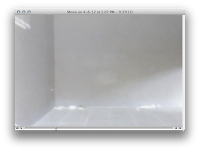The Voices Demons order them to do this, and they claim that they are creating a hole in my brain, similar to a lobotomy or the holes left by certain kinds of illegal street drugs. They call it, "masturbating a hole in [my] 'noggin."
The effects are now visible on the surface of my scalp, where the skin is scabbed and burnt:
 |
| The drill site, which is surrounded by deformities in the topography of my skull |
 |
| Sucker demons deform skeletal tissue when anchored to body |
 |
| Sucker demons' frequent and prolonged anchoring to my skull caused deformities |
These are not the only abnormalities in my skull. Cartilage has been removed from my nose, nerves have been damaged or cut in my face, muscle tissue has been degraded in key areas on my face (apparently, these creatures break muscle down somehow—probably by cutting nerves), and holes have already been drilled in my eye sockets. Scars from surgical incisions—from surgeries I know nothing about—can be found inside my noise, mouth and eye sockets.
They have also, just to be themselves (or, "make a point"), removed a childhood dog-bite scar from around my mouth, replaced it with a different looking one, and then put it back again, multiple times.
Once, they told me to look in the mirror; when I did, had hair one minute, but not the next. Nearly six years later, I found out that the hairs were individual sucker demons.


























.png)





